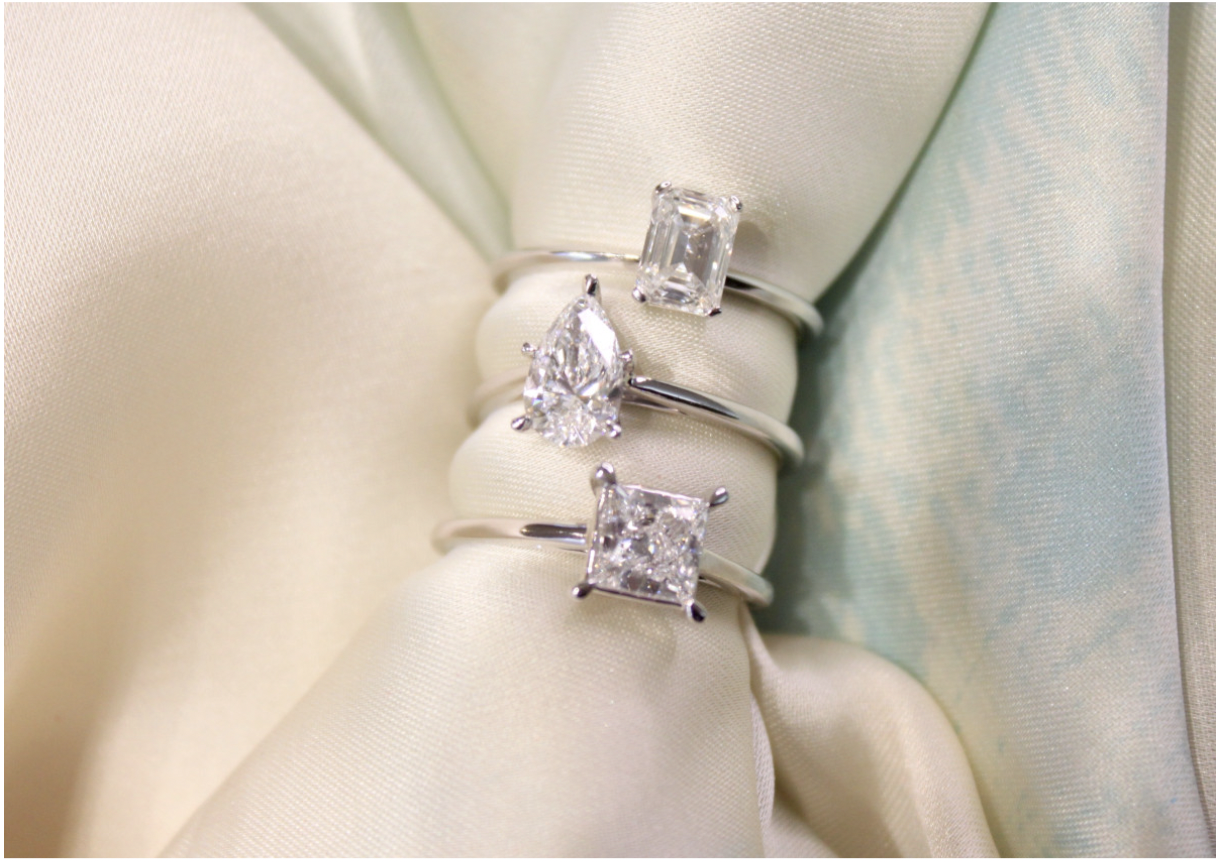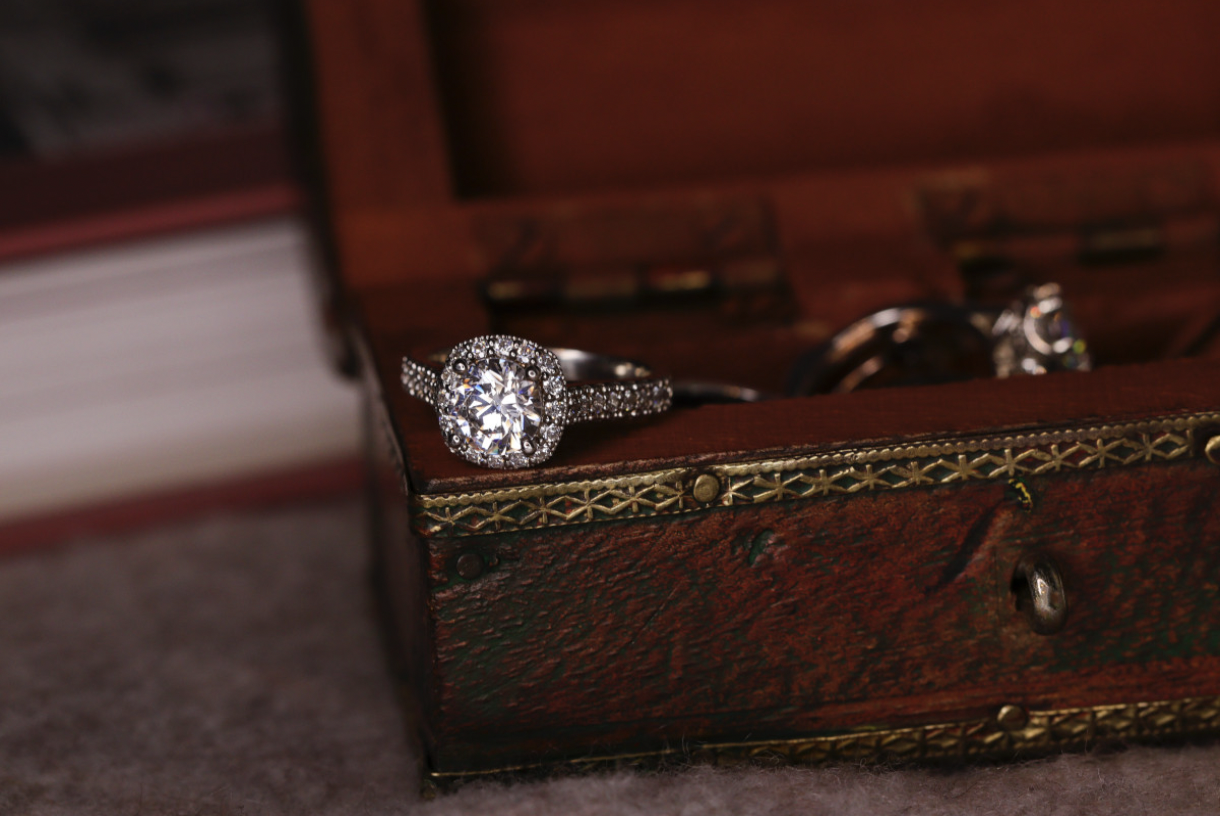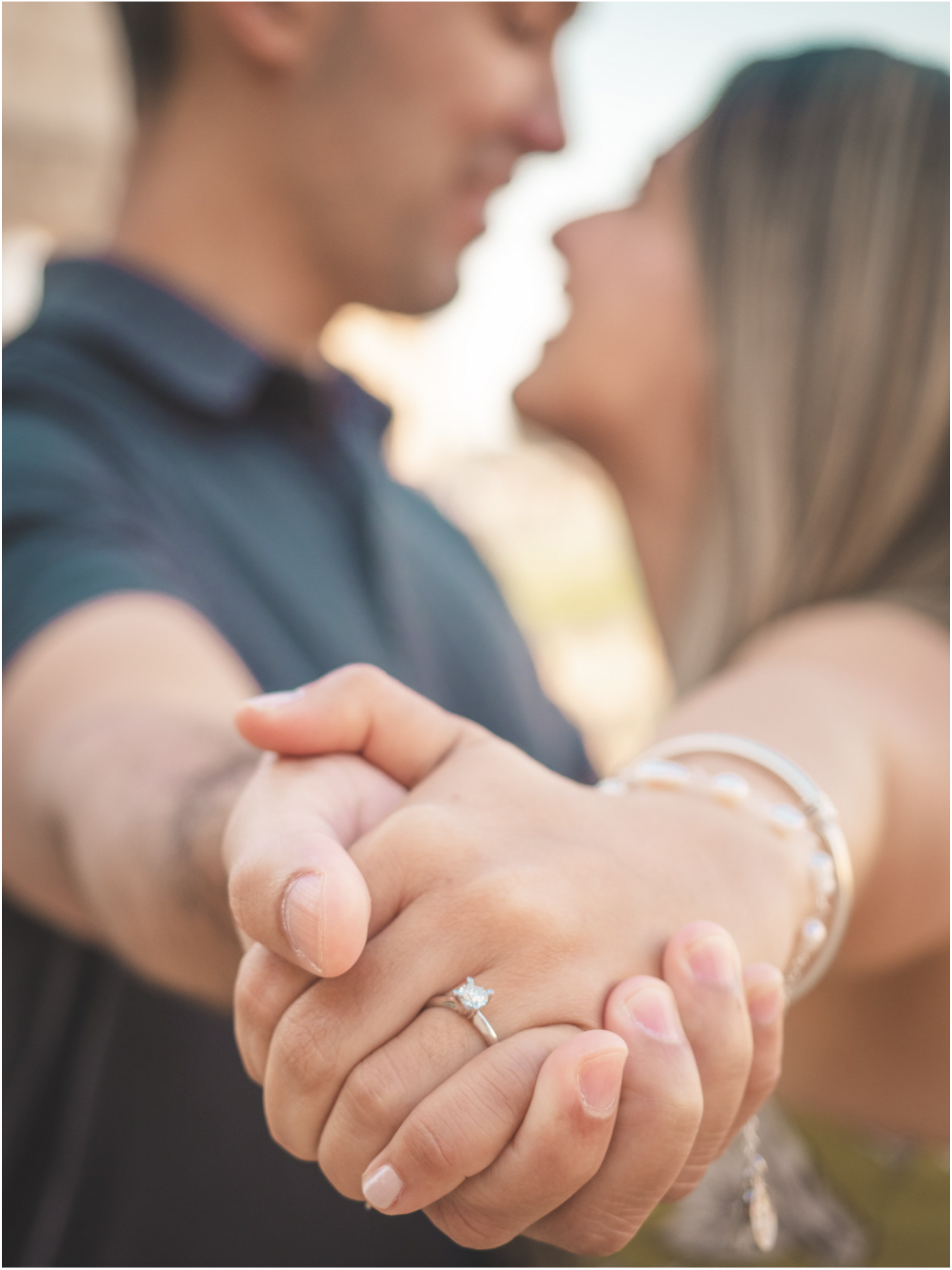Diamonds are Forever: How Engagement Rings Came to Be


[Image source: Paige Johnson on Unsplash]
Did you know that the tradition of exchanging engagement rings dates back thousands of years, spanning numerous cultures? As symbols of eternal love and commitment, these special bands have always represented a formal agreement to enter marriage. And while ring styles and trends may have evolved over time, their core meaning endures.
For couples today, choosing a ring is deeply personal and reflects their individual tastes. But take a look at history and you’ll gain a fascinating insight into how different societies have marked this milestone. From ancient Egypt's simple reed rings to the gimmel rings of medieval Europe, engagement rings have taken many forms across the ages.
Today, couples can draw from this rich history along with modern trends to select rings that resonate with their unique love stories. There’s a vast choice of engagement rings available, many of which can be personalised for a perfect match. “A bespoke engagement ring is a wonderful symbol of love in your relationship and of your commitment to each other,” as one jewellery expert puts it.
Although customs have changed through the centuries, engagement rings are still the most important symbol of the promise of marriage. In this article, let’s explore the traditions passed down through the centuries.
The earliest origins of betrothal rings
In ancient Egypt, rings were exchanged as early as 3000 BC. Egyptians believed that circles represented eternity, so rings came to symbolise never-ending devotion. Simple bands of reeds, leather or bone adorned early betrothals. By 1500 BC, rings featuring precious stones appeared among royal engagements.
The ancient Romans continued these ring traditions, crafting bands from flint and bone, and later from copper, silver and gold. Many women had two wedding rings – one made of iron to wear in private, and another made of gold to wear in public! The idea of wearing the ring on the third finger of the left hand also came from the ancient Romans who believed there was a vein from that finger running directly into the heart – the Vena Amoris (Vein of Love).
The Renaissance and beyond
During the Renaissance and into the Victorian era, betrothal rings evolved from simple bands to ornate jewellery pieces. Advances in ring cutting and setting enabled more elaborate gemstones and diamonds, filigree and engravings to feature.
A landmark engagement ring was given in 1477 by Archduke Maximilian of Austria to Mary of Burgundy. This gold and diamond ring featured Maximilian's initial in diamonds against a blue enamel background. With its innovative diamond cuts and elaborate design, Maximilian's gift pioneered lavish diamond and enamel engagement rings among European nobility for centuries to follow. Mary proudly wore this ring as a symbol of their union, setting influential standards for aristocratic betrothal jewellery. The Archduke Maximilian ring marked a milestone in evolving diamond ring tradition.
In Tudor England, modest gold bands signalled engagements and weddings across all classes. Among the wealthy, diamonds became more common in the 1700s following the influential example of Archduke Maximilian. The tradition continued evolving through the Victorian era, when solitaire diamond rings emerged as the most popular style after the discovery of South African diamond mines. With their emphasis on romantic symbolism, Victorian engagement rings marked the true birth of the diamond engagement ring tradition.

[Image source: Sabrianna on Unsplash]
Engagement rings in the 20th century
This enduring trend was further cemented during the Edwardian era, as elaborate diamond rings signified matrimony for affluent British couples. Throughout these transformative centuries, the diamond ring solidified as a betrothal token in the cultural consciousness.
The tradition spread beyond the elite in the early 20th century, as growing middle-class affluence enabled more couples across social strata to partake in diamond engagement rings. While once a mark of aristocracy, the rings became customary for middle and working-class couples in the UK, US and beyond. As diamonds became attainable for broader audiences, each generation put their own spin on ring styles while upholding the enduring symbolism of diamonds for weddings.
In the late 1930s, De Beers launched an influential marketing campaign that linked diamonds to romance and engagement. The famous slogan ‘A Diamond is Forever’ debuted in 1947. This campaign cemented the expectation that diamonds signify true love and commitment.
By the mid-20th century, etiquette dictated spending one to two month's salary on an engagement ring, with the advertising campaign cleverly asking: “How else could two months’ salary last forever?” Diamond sales soared as suitors strived to select the largest, most brilliant diamond within their budget.
Trends expanded beyond solitaires to include emerald and baguette accents. Fancy shapes like ovals, pear cuts, and marquises also gained traction. By the 1960s, unconventional ring styles emerged, from chunky, sculptural rings to minimalist bands. The late 20th century saw a rise in coloured gemstones and men's diamond rings.

[Image source: Maria Saggese on Unsplash]
Getting engaged today
In a departure from the often bold, flashy rings of the late 20th century, contemporary couples today often prefer understated and ethical engagement rings. The emphasis is shifting from size back to symbolic meaning. Vintage and estate rings from antique shops or family inheritances are also popular, offering historic charm and uniqueness. Custom-designed rings cater to personalised tastes, with couples collaborating on one-of-a-kind settings and innovative designs.
Socially-conscious couples look for ethical stones and transparent sourcing, like conflict-free diamonds and fair trade gems. Lab-grown diamonds have risen as affordable, sustainable alternatives. How much you should spend on an engagement ring is a personal choice that will depend on budget and circumstance. The average cost of engagement rings in the UK currently falls in the £1,500 to £2,500 price bracket, but budgets can vary widely.
While solitaires and halo settings remain timeless, coloured gems like sapphires and emeralds are having a resurgence. Unique cuts, asymmetric settings, and nature-inspired designs add originality. Engraving rings with special words or dates is a popular way to personalise meaning.
Overall, contemporary rings celebrate the couple’s distinctive love story rather than adhering to uniform traditions. While wedding ring jewellery styles and preferences may have changed dramatically over time, the engagement ring continues to signify life-long partnership in all its modern diversity. Whether you prefer a traditional diamond ring, or unique colourful gemstones such as sapphires, rubies and emeralds, the core symbols of commitment and unity continue to shine.